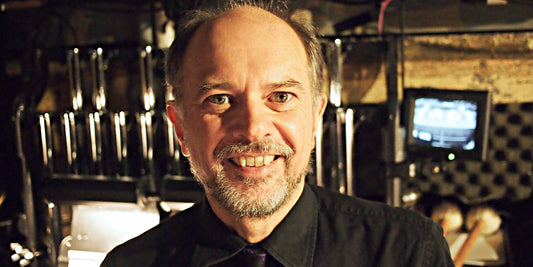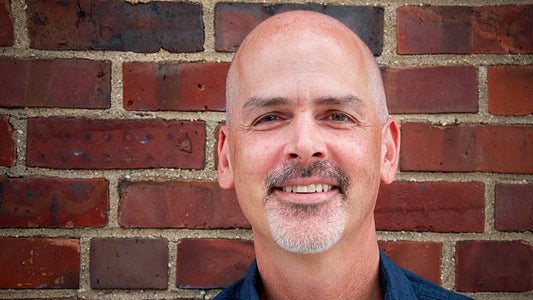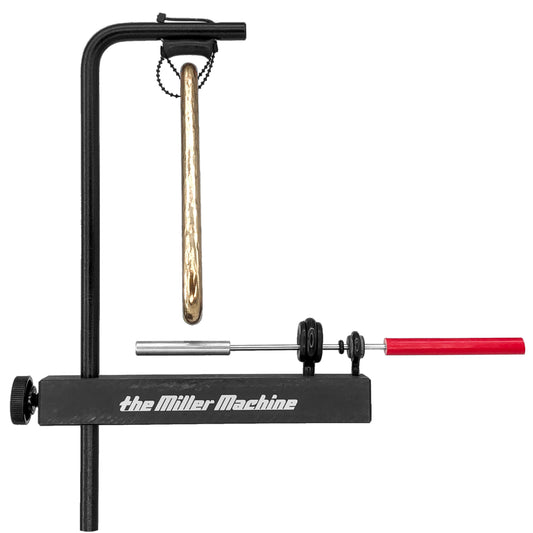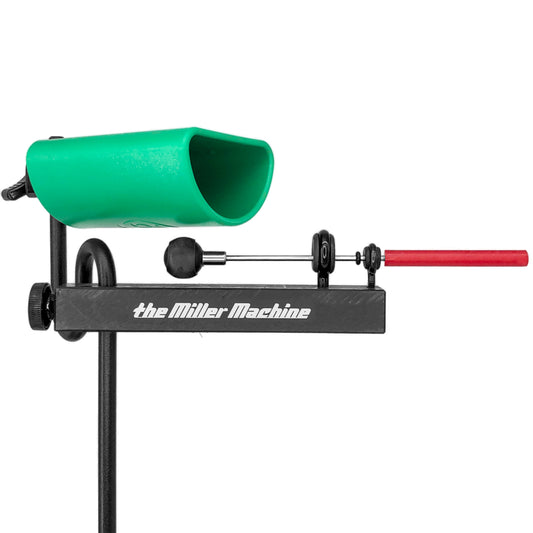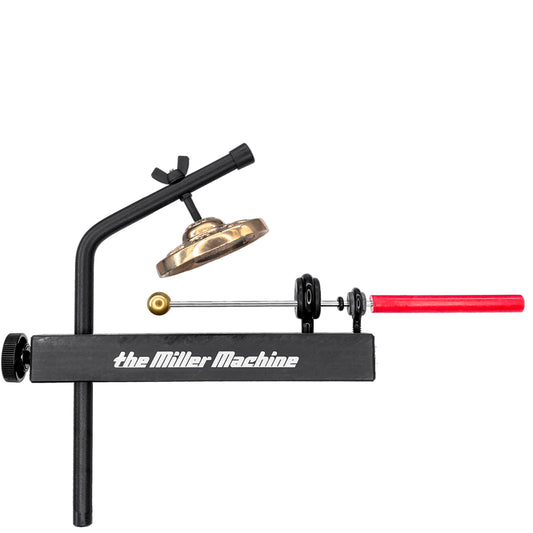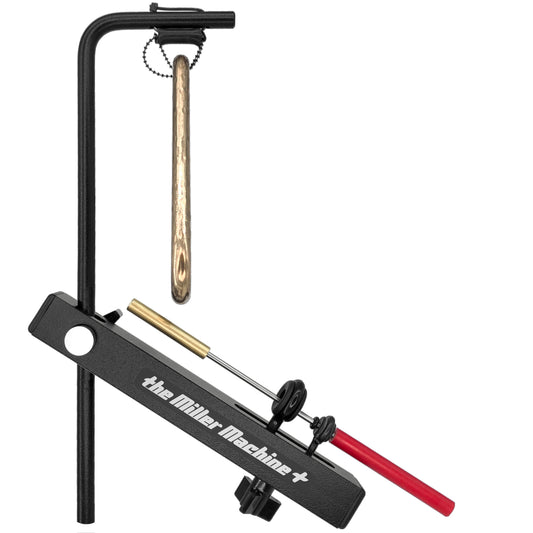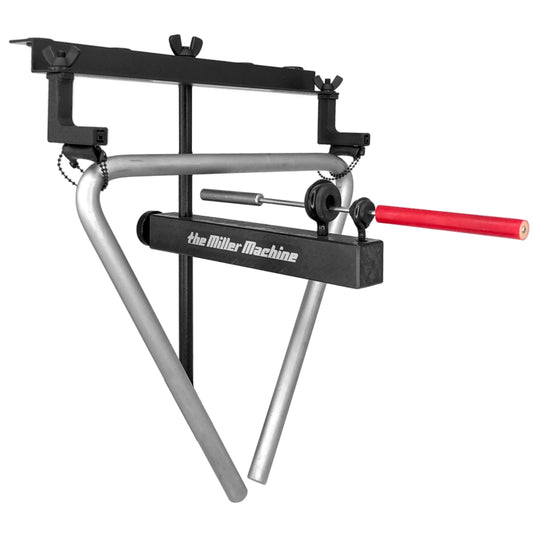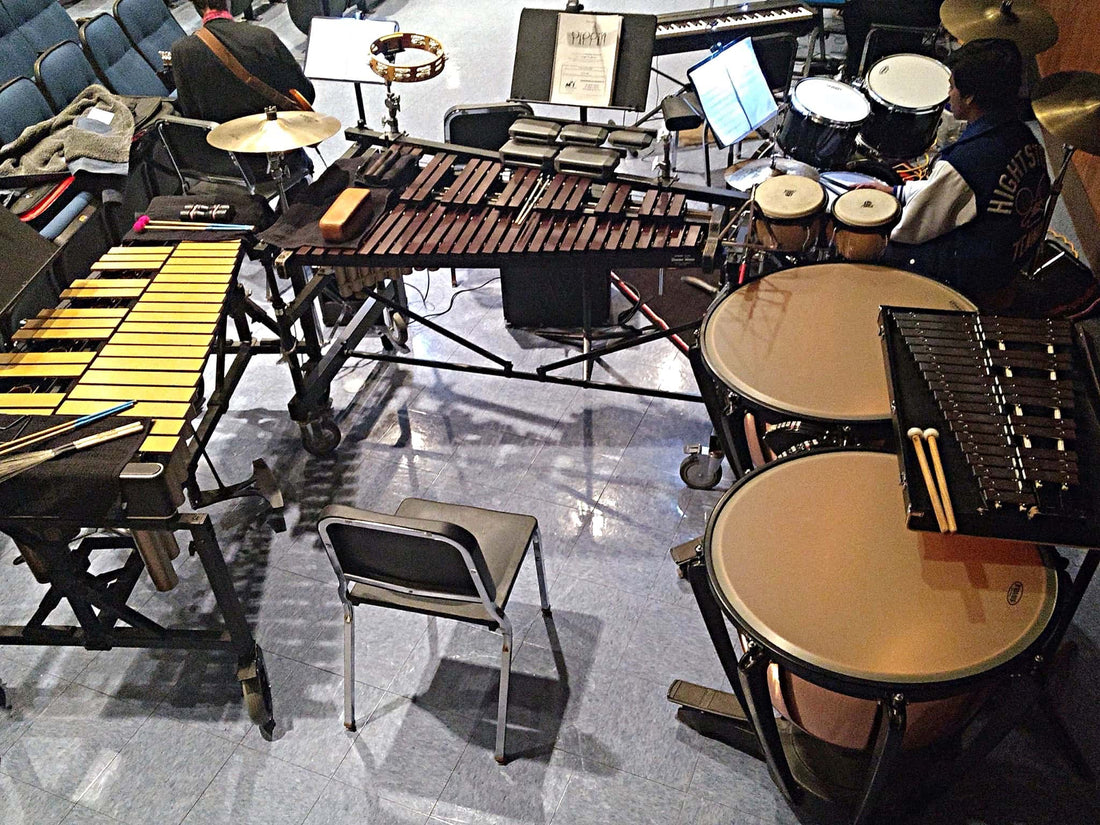
Pippin - Will Marinelli
Will Marinelli's percussion setup for the Hightstown High School's production of Pippin in Hightstown, New Jersey.
Will's writeup below photos.







"Being flexible to any situation is critical in the pit orchestra world. During the run of this production I was reminded of that in three ways.
The first way was from preparing the book. As written, it is impossible to play everything in Pippin’s percussion book with only one player. There is a separate drum book, but for the most part that person will be playing during the same moments you are. Therefore, before starting rehearsals, I had to do a lot of careful listening/studying/practicing in order to determine what to play and what to leave out at times. Certain numbers in the score focused heavily on the xylophone and vibraphone, while other moments needed the color provided by tambourine, cowbell, bongos, etc. Once rehearsals were underway, and I had a better idea of how the orchestra and cast as a whole would responded to certain things, I then chose whether to keep some of my initial tacet cue decisions or add them in. I was fortunate in that my Music Director gave me free reign to choose whichever instruments I wanted to play in those moments, but I’ll stress that every MD is different and these situations should always be dealt with on a case by case basis.
The second way was from the instruments themselves. As I am only recently out of school and, as many young players find themselves, in the process of slowly accumulating my own large instruments, I had to rely on the host school to provide all of the large instruments. (Timpani, Xylophone, Vibraphone, Glockenspiel, Bongos) While you never know what you might get with school instruments, the instruments this school gave me were very good quality. One unexpected bonus was the Moto Cart Frame on the xylophone. Typically used in marching settings, this frame allows the player to attach smaller instruments to it. I took advantage of this by attaching my tambourine, cowbell, suspended cymbal, and Miller Machine to the frame. It ended up saving me space and use of my hands. This run also served as my new Miller Machine’s inaugural run and I was more than happy being able to finally put one to use. It definitely made some moments in this show a lot easier to manage!
The third and final way had absolutely nothing to do with me. Rather, it served as a reminder that anything can happen in live theatre. Just prior to downbeat on our final show, the soundboard died. After a half hour, the show’s director decided that the show would go on without the microphones the cast normally uses. As a result, the entire orchestra had to play at reduced volumes. While this had the potential to be a quagmire of trouble, (especially for the percussion, drums, guitar, bass, and keyboards) the advanced listening and focus from everyone, as well as the renewed energy from the cast of not having to wear mic packs, resulted in the strongest show of the run. The bottom line here is to really be tuned into the moment and react accordingly to what goes on around you. After all, theatre is live and everyone, from the cast to the crew to the orchestra, is an equal part of the onstage magic."
Pippin - Regional - Will Marinelli
March 2018



